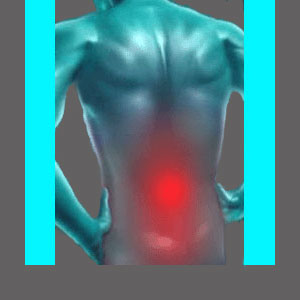
Learning the spinal stenosis facts is a must for any patient who is diagnosed with a narrowed spinal canal condition. When it comes to medical science, facts is a very risky word to use, since the healthcare system has a long and sordid past of getting everything wrong. Looking back into history will reveal that the more doctors think they know about virtually anything, the more time simply proves them wrong. Ironically, no matter how many centuries go by with this statement being completely true, we feel that now is finally the time that we have it all correct. “Now” has come and gone countless times already and will continue to do so.
Facts? Ok, let’s try to clarify them, based on what we know today.
Spinal Stenosis Facts and Evidence
Here are some supportive articles demonstrating what we do know about central canal stenosis and the spine, in general:
Spinal stenosis FAQ shows that there are far more questions than answers from patients who have been diagnosed with stenosis of the spine. Unfortunately, their questions have been ignored or gone unanswered by the very doctors they pay for advice and treatment.
Spinal stenosis clinical studies show that the physical signs of stenosis are almost universal in aging people. Research also demonstrates the fact that most cases of mild to moderate stenosis are not painful or symptomatic to any large degree, if at all.
Spinal stenosis information clearly shows that even when diagnosed correctly as the source of pain, some stenosis conditions can not be treated successfully. Many patients end up worse after treatment than before.
Arthritic spinal stenosis is normal to experience as we get older. Most osteoarthritic changes will affect the viability of the central canal and foraminal openings, but symptoms are unlikely to result from mild to moderate arthritic degeneration. Severe and extreme arthritis is likely to cause symptoms due to both mechanical vertebral interactions, as well as neurological stenotic dysfunction.
The neurological effects of spinal stenosis make the condition’s symptomology highly variable. Stenosis can affect the nerves in many different ways.
Genetics play a role in who will develop spinal stenosis, as well as who will develop symptoms.
Is it possible to prevent spinal stenosis? We investigate this important question and provide a definitive answer.
Hereditary spinal stenosis can be passed along from generation to generation. Learn what you can do to combat genetics when it comes to stenosis.
Want to learn how to best conquer spinal canal narrowing? Our spinal stenosis guide has step by step advice to help you to succeed.
Spinal Stenosis Falsehoods and Truths
Ok, here are some myths about spinal canal stenosis:
Spinal stenosis indicates something is wrong with the spine. False. Stenosis is actually quite normal as we get older.
Spinal stenosis is inherently painful. False. Most cases of mild to moderate stenosis do not cause any symptoms whatsoever.
Spinal stenosis must indicate some form of back injury. False. Most stenosis is part of normal spinal aging or is a congenital or developmental irregularity.
Spinal stenosis always requires surgery. False. Most minor stenosis is not the source of pain and requires no active treatment whatsoever. For stenosis which is painful or functionally impairing, noninvasive methods of care may be indicated and successfully implemented in some cases, depending on the underlying reason for the canal narrowing to be present.
Spinal stenosis always causes paralysis. False. Paralysis is actually a very uncommon result of typical instances of stenotic change in the spine.
Objective Spinal Stenosis Facts
So, there you have it; some facts, as they exist here and now. I am amazed on how little many doctors know about spinal stenosis. After all, spending so many years now as a back pain patient advocate and scholar, I have the opportunity to talk to literally hundreds of physicians and chiropractors each year. Most do not know what is going on when it comes to diagnosing or treating spinal canal stenosis. It must be ignorance; for the other possible explanation of care providers purposefully taking advantage of patients with mild to moderate degrees of asymptomatic stenosis, just for the sake of profit, would be unimaginable, don’t you think?
Remember, when learning about spinal stenosis, always consider the source of the news, and the motivation of the source, before deciding on its worth.
Spinal Stenosis > Spinal Stenosis Facts





